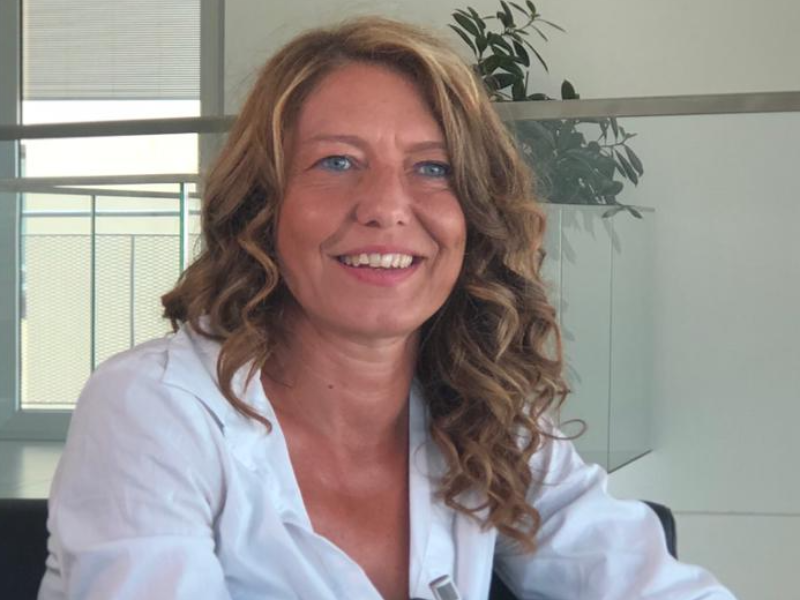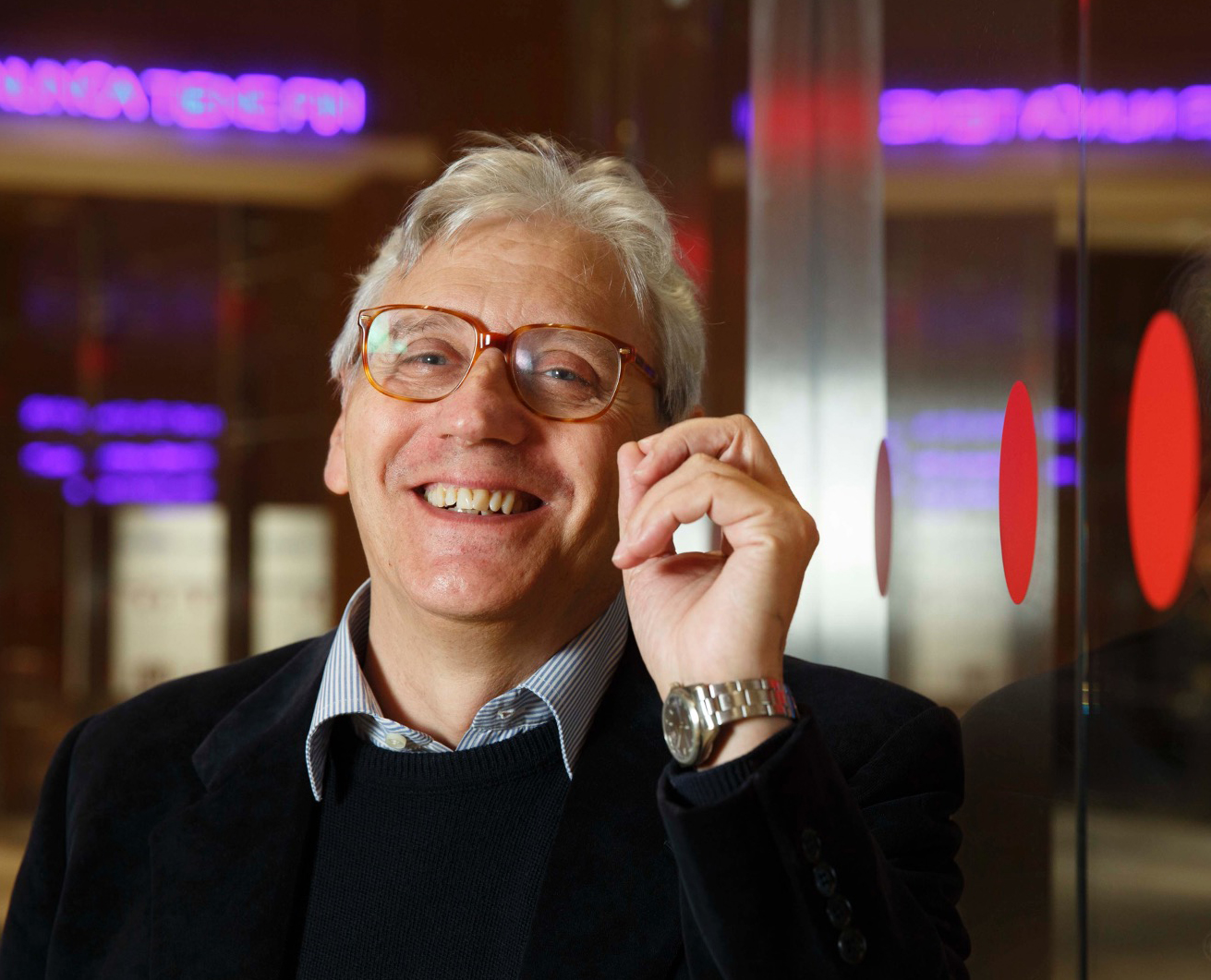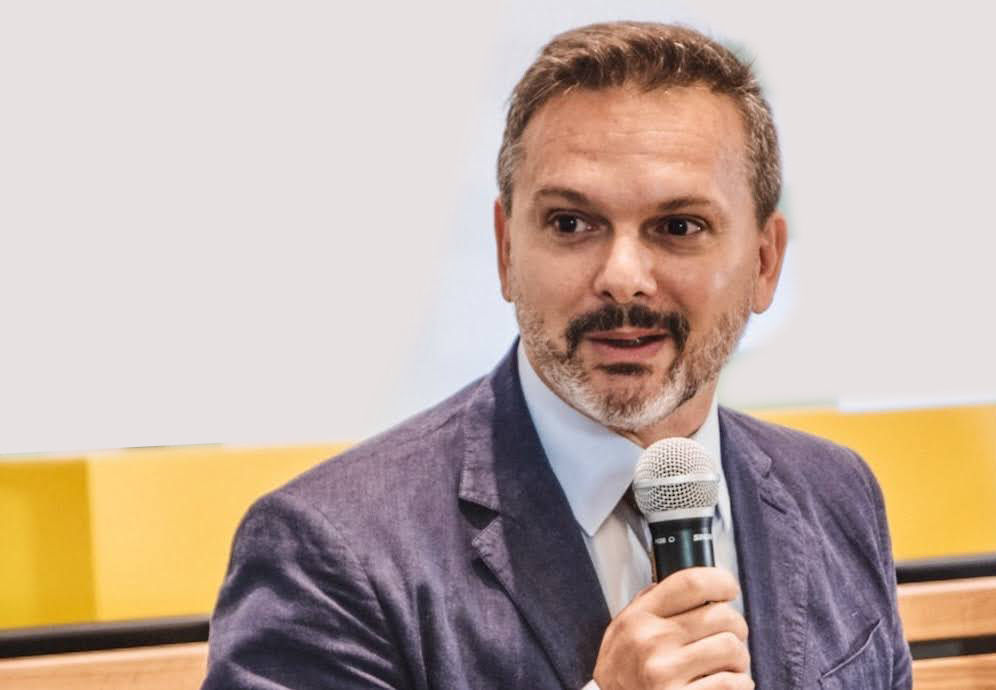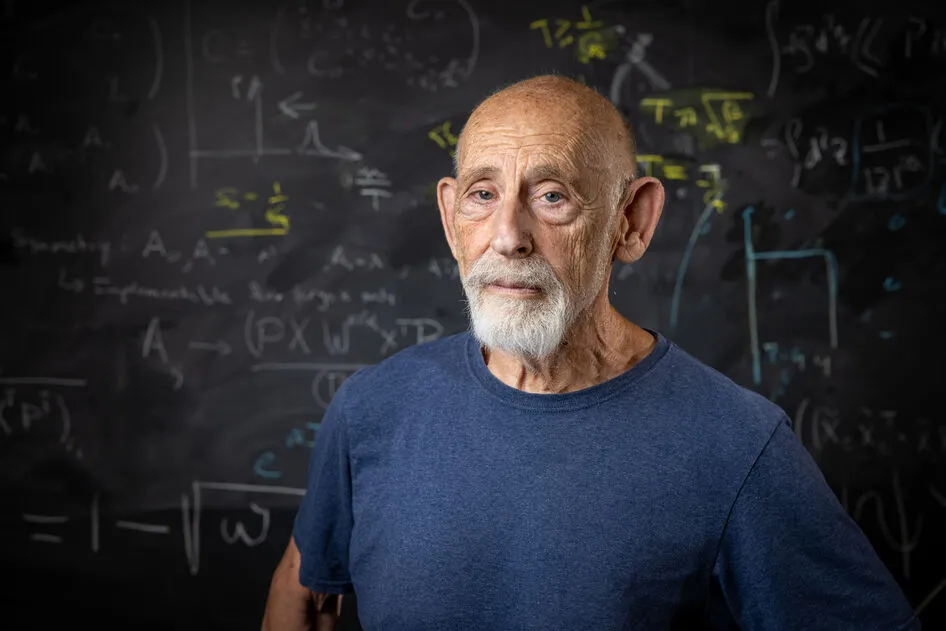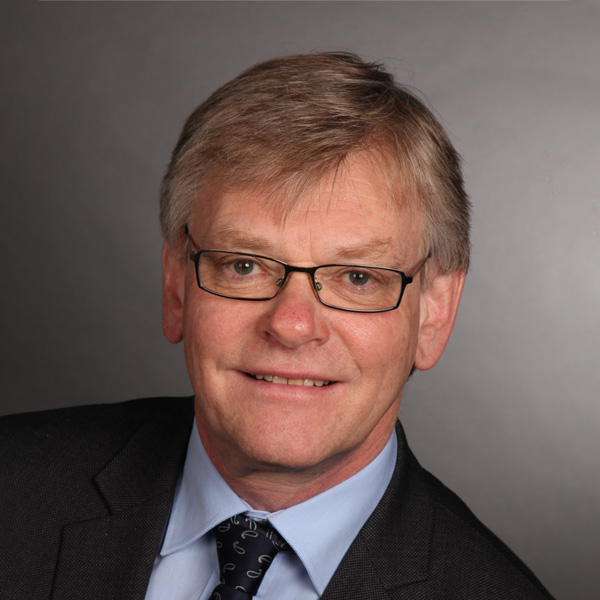Interview with Karl Jakobs, Secretary of the update process of the European Strategy for Particle Physics
What is the European Strategy for Particle Physics?
The European Strategy for Particle Physics is a cornerstone in the decision-making process on the future of particle physics in Europe, particularly related to the accelerators at CERN. CERN is the European centre for particle physics, with a large scientific community comprising 25 member states. Since it is this community that will use the next large collider, it is essential to involve it in the decision process on which machine to build. A multi-stage strategy process has been set up, with the contribution of specific groups. The main one is the European Strategy Group, consisting of about 70 representatives from all the member States and the national laboratories, and charged with drafting the recommendations to be submitted to the CERN Council, which will make the final decision. To arrive at these recommendations, the particle physics community in Europe has been directly involved through a call for inputs. We have received 266 submissions in total, a lot of feedback, which were then condensed into a series of reports by special working groups for the Open Symposium, that was recently held in Venice Lido. At that meeting, extensive discussion sessions took place to give everyone a chance to contribute.
What was the role of the Symposium in defining the Strategy?
The Symposium is a fundamental moment of debate, an assembly open to the European – and beyond – particle physics community, allowing everybody to give their input, express their feedback and participate in the discussions on the most important topics regarding the future of the field. Clearly, physics is at the centre of the debate: accelerators need to be built to address the large open fundamental questions. While there is large consensus on the questions itself, there are different opinions on how to best approach them, i.e. with which kind of collider. The discussion sessions during the Symposium were organised in thematic blocks of 45 minutes each, in order to analyse the proposals presented and assess the variety of opinions. Alongside physics, technologies were also examined – for accelerators, for detectors and for computing – and new approaches, such as artificial intelligence, which could play an important role.
In your opinion, what are the most relevant aspects that emerged from this Symposium?
First, a clear convergence on the fundamental questions to be addressed has emerged. The Higgs boson, discovered 13 years ago at CERN, is a completely new particle that needs to be studied and understood in detail, because it may hold the keys for answering some of the biggest puzzles we have, so there is broad agreement that the Higgs boson should be central in the exploration with the next collider. The relevance of other fundamental unresolved questions was then emphasised: why is there an asymmetry between matter and antimatter? Why did matter prevail over antimatter after the Big Bang? What is the nature of dark matter? And, in addition to the major scientific issues, the community also agreed on two other points. The first one concerns the feasibility study for the Future Circular Collider – the project for a future large collider with a circumference of 91 kilometres – which started in 2020 and whose results were made public in March this year and submitted to the Strategy process. To date, the study confirms the technical feasibility of the project and no showstoppers have been identified: a very important message that the community reiterated during the Symposium. The other point of convergence arose from the question of which is the best candidate for CERN’s next flagship accelerator. An overwhelming majority of the national high-energy physics (HEP) communities in the CERN member states ranked FCC as the top priority. The alternatives will still be discussed. Only in December, the scientific community will recommend to the CERN Council which collider to invest in as a future flagship project and the possible alternatives.
What are the next steps and what is the timeline?
The next step is to write up the conclusions on the physics and technology aspects, based on the contributions and discussions that took place during the Symposium. These conclusions will be summarised in the Physics Briefing Book, which will be published on 30th September and will make a significant contribution to the final decision, although not alone. Another important step of the European Strategy Group will in fact be the comparison of the different projects in order to prioritise them. In addition to physics, the technical feasibility, costs and timelines will be evaluated. Given the feasibility study, the answers are already largely available for FCC, however, they must also be reviewed for the alternative projects. The national HEP communities will be able to give their final input based on the Physics Briefing Book by 14th November, while the final recommendation drafting session will be held from 1st to 5th December. On those days, the European Strategy Group, who will by then be in possession of all the information, will meet in Switzerland, in Ascona, on Lake Maggiore, to draft the final recommendations in a closed session. These recommendations will then be submitted to the CERN Council, who will discuss them and officially update the European Strategy of Particle Physics at a dedicated meeting in Budapest at the end of May 2026.
Which are the main options under discussion?
FCC is the project for a new large collider at CERN, with a circumference of an impressive 91 kilometres. FCC envisages an integrated programme in two phases: the first phase involves an electron-positron collider, a Higgs and electroweak physics factory, which would enable extremely high-precision physics; the second phase foresees a proton collider, similar to the current Large Hadron Collider (LHC) but operating at much higher energies, to do physics in a completely new energy regime. The main alternative to FCC is a linear electron-positron collider, initially 21 kilometres long and in its final configuration 33.5 kilometres. Electrons accelerated by a linear accelerator do not lose energy by synchrotron radiation, whereas on a circular orbit they constantly lose energy; however, in a linear collider it is only possible to collide them once, while in a circular collider the electron and positron bunches can be brought to collision in several interaction points, and thereby in several detectors, at each turn. Alongside the linear collider proposal, two other projects have emerged: one would make use of the LHC tunnel to build an electron-positron collider, effectively creating a Higgs factory to study its properties; in the second case, the idea is to build a new, 9 kilometres long accelerator to accelerate electrons to 50 GeV and enable electron-proton collisions. For the protons, the LHC ring would be used, in which a single beam of protons would circulate and collide, at a single interaction point, with the electron beam. Finally, there is the Muon Collider option, which however still requires further research and development work, and which should also be preceded by a demonstrator.
What do you believe are the most critical aspects of the Strategy definition process?
I think the most critical phase is when we will rank the projects and set priorities, because of course not everybody will be happy. It is inevitable to go through this process; we can only build one large collider, which must be feasible, technically and financially. There will be “winners and losers”, but I hope we can reach consensus within the community, and that even the “losers” will join and say “let’s work together as we have always done”. Given the nature of our research field, we need to agree on a common facility that will be used by the community for decades to come. So, a consensus must be reached. This is different in other areas of science, for example in disciplines where every professor runs his or her own experiment.
What will the construction of a new machine represent for CERN and for Europe?
CERN is a prime example of European cooperation that works very well. CERN is a fascinating place, likewise is the science done there, and it is the world’s leading laboratory in particle physics. We should do everything possible to keep CERN and Europe in this position. Building the next large collider at CERN would bring enormous benefits to Europe, and it is no coincidence that Mario Draghi mentioned this in his recent report on the European competitiveness.
How to convince politicians to fund such an ambitious project?
Fundamental science is important not only for the gaining of knowledge, but also for society. It is part of our cultural heritage, and history has often shown that fundamental research is a driving force for innovation and for the development of new technologies. In addition, it trains young people in a stimulating international environment, such as that offered by CERN. Large worldwide collaborations among scientists build bridges to a more peaceful world, and this is very important today, given the direction in which the world is heading.
Today particle physics no longer has a clear objective as it did in the days of the Higgs boson. How can we attract younger generations of scientists in this context of uncertainty?
It is true, at the time of LHC we had a clear question: “Does the Higgs particle exist?”. We knew, thanks to the theorists, how it would show up, what it would look like, what to look for. The LHC experiments were designed accordingly to make sure that the full theoretically allowed mass range could be covered. Today, since no signs of physics beyond the Standard Model has shown up at LHC, the guidance from theory is not that strong. However, this must motivate us to carry out an intense experimental exploration. We can reach a new energy domain or increase the precision of experiments, and thus, respectively, venture into uncharted territory, or make enormous progress in the understanding the Higgs particle and the electroweak sector. There is always a gain in knowledge. Sometimes theory makes a prediction, sometimes experiments discover something first and theory has a hard time to explain it. There is still much to be explained, and the big unresolved questions should motivate young people. For example, it is shocking that when looking at the energy content of the universe only 5% is understood, while the rest remains dark, in the form of dark matter and dark energy. Just as fascinating is the question of the matter-antimatter asymmetry. There must be answers; and this drives and motivates young people. In addition, there are the technological aspects. CERN has always been at the forefront of technology, electronics and computers – from the invention of the World Wide Web to the use of neural networks back in the late 1990s – and this is also a strong driver for young people.
Speaking of new technologies, which tools are you adopting to limit the energy impact of large particle physics projects?
There is large awareness at CERN, in the laboratories and in the community, of environmental issues, and we are already working towards reducing the environmental impact. For example, we are implementing lower energy consumption technologies, such as energy recovery linear accelerators. On the detector front, we are testing new gases for detectors that have a much reduced global-warming potential compared to conventional detector gases used so far. Europe in general is striving to switch to more CO2 neutral energy productions, so I hope that we will be able to rely on these energy sources in the future.
How much more energy would FCC need compared to LHC?
This depends on the operating energy and type of collider. FCC-ee at low energy has a similar power consumption as LHC, but this increases if it reaches 250-360 GeV. FCC-hh, on the other hand, planned to operate in the second phase, will have a higher energy consumption. Yet most of the LHC’s energy consumption goes into cooling, not acceleration. LHC is operated at 1.9 kelvin, a temperature very close to absolute zero, which requires a lot of cooling power. If the operating temperature for FCC-hh could be increased to 4 kelvin, or even 10 kelvin, a lot of energy would be saved. At CERN, people are working in this direction, in the direction of high-temperature superconducting magnets. High-temperature superconductors already exist and hold significant potential also for other areas of science and industry. However, their use for accelerator magnets requires significantly more R&D effort, as well as collaboration with other sectors and industry itself.
What role does scientific research, particularly fundamental physics, play in society today?
Fundamental physics contributes in many aspects to society, via the creation of knowledge, which is a cultural asset, through technological innovations and through education. There are many products that emerged from the technological developments in our field. To name but a few: many accelerators are used today in the medical field for proton or heavy ion therapy, and this is an application that was strongly driven by Professor Ugo Amaldi; or, looking at detectors, some, similar to those used in the LHC experiments, are also used by big companies for positron emission tomography; and then there are the computing spinoffs, such as the World Wide Web. We give a lot to society, but primarily we create knowledge, which I consider fundamental.
BIO
Karl Jakobs is Professor of Physics at the University of Freiburg in Germany since 2003. His main activities of research are the study of the Higgs particle and the search for extensions of the Standard Model of particle physics at the Large Hadron Collider at CERN. He participated in leading roles in experiments at CERN and at the US laboratory Fermilab/Chicago. From 2017 to 2021 he was the Spokesperson of the ATLAS Experiment. From 2021 to 2023 he was the Chairperson of the European Committee for Future Accelerators (ECFA), and in 2024 he has been appointed as Secretary to organise the new update of the European Strategy for Particle Physics.
